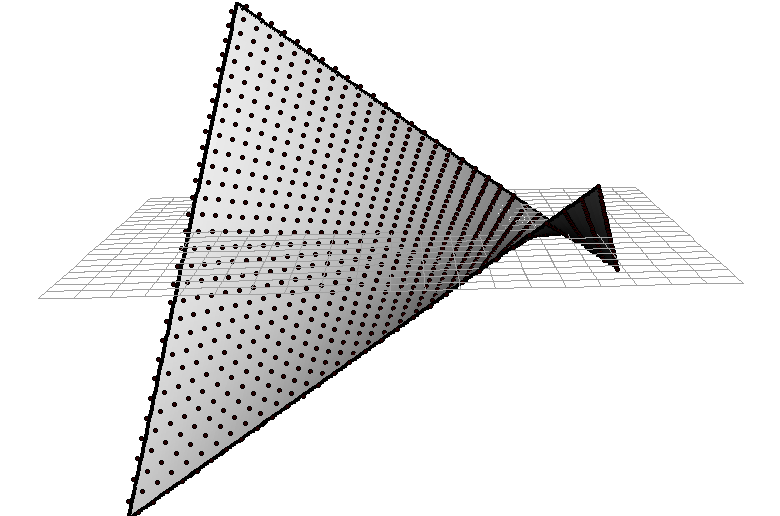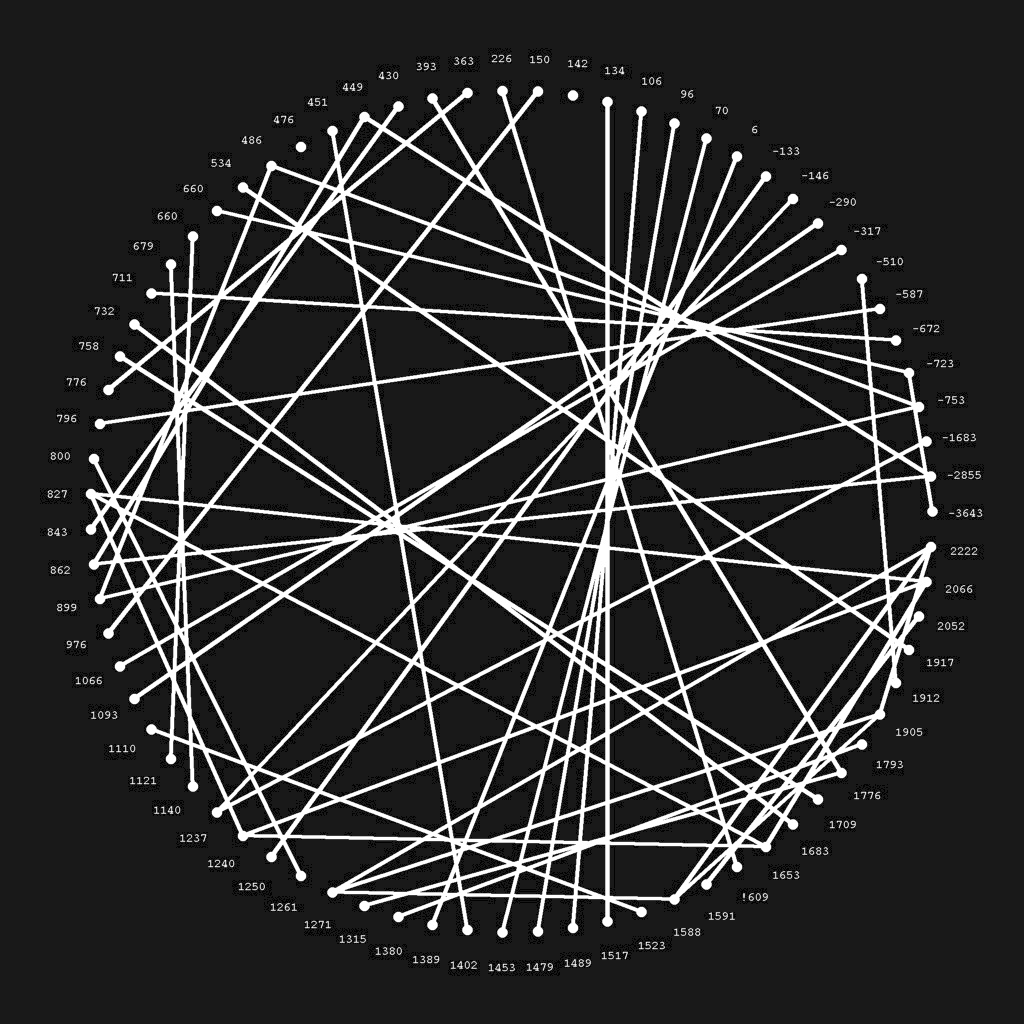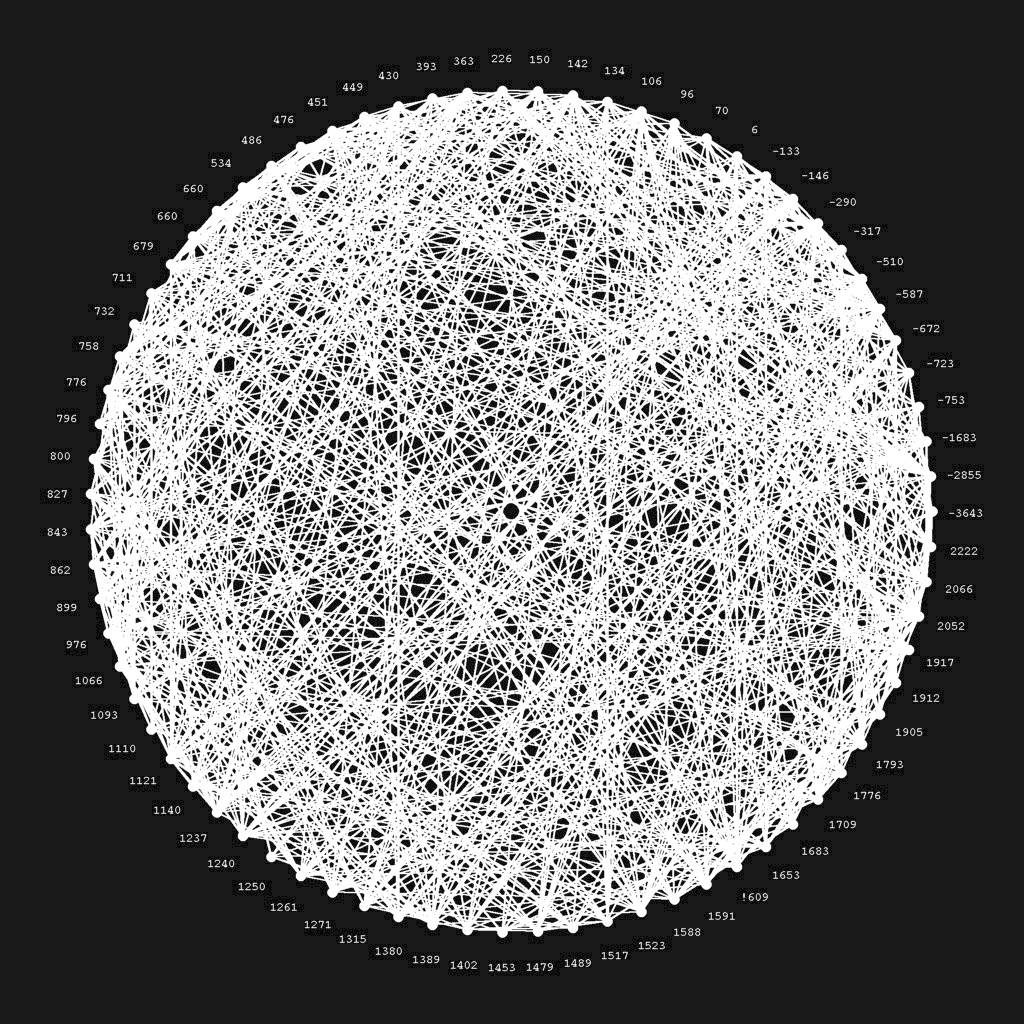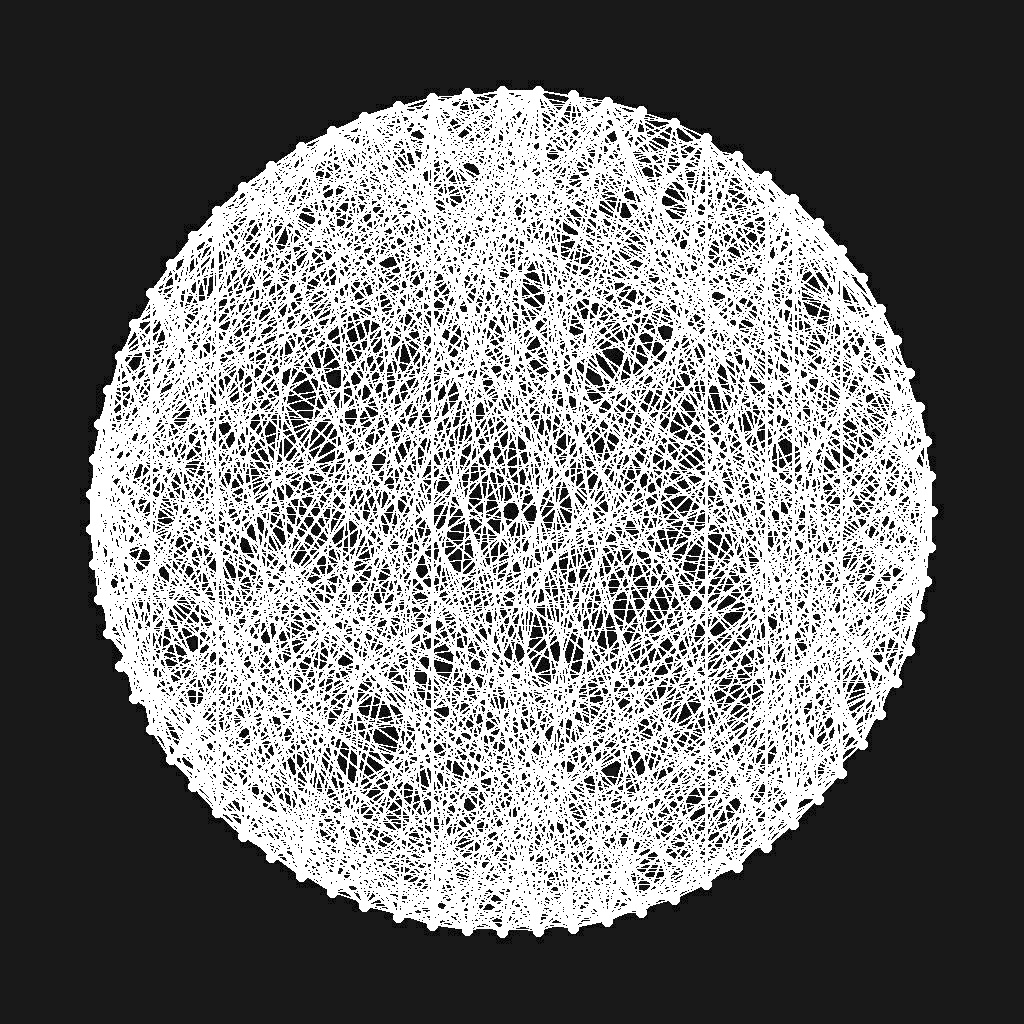
The formula of Khlebnikov, visualized as surface in 3-dimensional space.
Khlebnikov's Laws of Time
Teacher: And what else have you discovered?
Student: You see, I keep thinking about the action of the future on the past. But given the weight of
ancient books that keeps pressing down on humanity, is it even possible to conceive such matters? No,
mortal, cast your eyes peacefully downward! Whatever happened to the great destroyers of books? Their
waves are as shaky a footing as the dry land of ignorance!
Teacher: Anything else?
Student: Anything else? Yes! You see, what I wanted was to read the writing traced by destiny on the
scroll of human affairs. (...) I have discovered that in general a time period Z separates similar events:
Z = (365 + 48 * y) * x,
where y can have a positive or a negative value. (...) The conquest of Egypt in 1250 corresponds to the fall of the kingdom of Pergamum in 133. The Polovtsians overran the Russian steppe in 1093, 1383 years after the fall of Samnium in 290. And in 534 the kingdom of the Vandals was subjugated. Should we not therefore expect some state to fall in 1917?
Egypt and Pergamum: 1250 - (-133) = (365 + 48 * 2) * 3
Fall of a state in 1917: 1917 - 534 = (365 + 48 * 2) * 3

All dates occuring in Khlebnikov's "Teacher and Student". Two dates are connected by a line if Khlebnikov gives explicit values (x,y) for these dates.

All connections Khlebnikov could have found if he kept the x-values, but took all possible y-values into account.

All connections that can be found between the dates given by Khlebnikov when taking all possible x- and y- values into account.

Random dates inbetween 3000 BC and 2000 AD and all corresponding connections.
Conclusion: Despite the large number of historical examples provided by Khlebnikov, his results are to be expected. In fact, similar results can be produced with random numbers. Thus, his method is less mathematical, but rather occult.
Illustrations: AG Mathematical Geometry Processing, FU Berlin Henriette Lipschütz, Ulrich Reitebuch, and Martin Skrodzki.